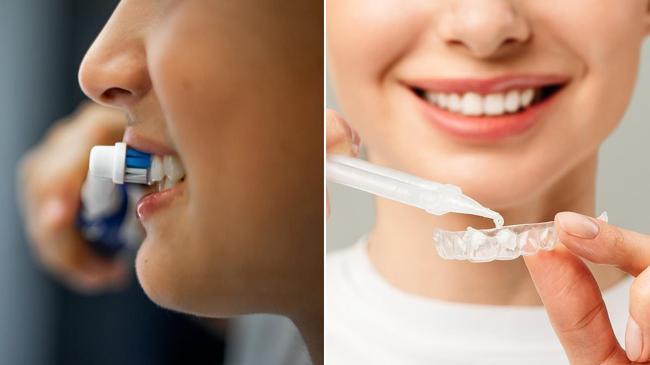Summary
The global marketprojected to reach over $2.3 billion by 2030is riding a wave of consumer insight, driven by a generation that prizes glow, but demands more from their products.
Source: Forbes

AI News Q&A (Free Content)
Q1: How has the self-tanning industry evolved over the years, and what are the key factors driving its growth towards a projected $2.3 billion market by 2030?
A1: The self-tanning industry has evolved significantly, with increasing consumer demand for sunless tanning products that avoid harmful UV exposure. Key factors driving growth include advancements in product formulations that offer a natural look, the influence of social media beauty trends, and the rising awareness of skin cancer risks associated with sun tanning. Brands like Bondi Sands have capitalized on these trends by offering a wide range of self-tanners and expanding into international markets. The market is projected to reach over $2.3 billion by 2030 due to these factors and the growing preference for skincare products that also provide aesthetic enhancement.
Q2: What are the potential health risks associated with cosmetic ingredients, particularly in nail polishes, and how are regulations addressing these concerns?
A2: Nail polishes often contain toxic components such as formaldehyde and toluene sulfonamide-formaldehyde resin, which can cause allergic reactions and other health issues. Regulations, especially in the European Union, have become stringent, requiring transparency in labeling and the restriction of harmful substances. However, in the United States, the FDA does not require pre-market approval for cosmetic products, which can lead to gaps in safety assurance. Continuous research and monitoring of cosmetic formulations are essential to ensure health safety and environmental sustainability.
Q3: How has the integration of robotics and artificial intelligence in skincare procedures impacted the beauty industry?
A3: The integration of robotics and AI in skincare has revolutionized the beauty industry by automating complex procedures, such as laser-based dermatology treatments. Innovative technologies allow for precise energy delivery onto the skin through robotic manipulators, enhancing the accuracy and safety of cosmetic procedures. This automation not only improves the efficiency of treatments but also expands accessibility by reducing the need for highly skilled manual labor. Research demonstrates the potential for such technologies to adapt to various skin types and conditions, paving the way for personalized skincare solutions.
Q4: What scientific advancements have been made in simulating the effects of skincare products on facial pores?
A4: Recent advancements in skincare simulation involve the development of models that predict changes in facial pores following the use of skincare products. By collecting clinical data and employing techniques like UNet-based segmentation and regression modules, researchers can simulate pore deformation over time. These simulations help in understanding skin responses to different products, enabling better product recommendations and personalized skincare strategies. As a result, consumers can anticipate skin condition changes and manage their skincare routines more effectively.
Q5: What role do medicinal plants play in the cosmetics industry, particularly in the development of sustainable skincare products?
A5: Medicinal plants have been integral to the cosmetics industry, known for their therapeutic properties and sustainability. They form the basis of plant-based cosmetics, which are increasingly popular due to consumer preference for natural ingredients. The use of these plants in cosmetics supports sustainable practices and caters to the growing demand for eco-friendly products. This trend not only benefits skin and hair care but also aligns with broader environmental goals by reducing reliance on synthetic compounds.
Q6: How do convolutional neural networks contribute to the detection of facial skin lesions in cosmetic applications?
A6: Convolutional neural networks (CNNs) have been employed in the detection of facial skin lesions, enhancing cosmetic applications by accurately identifying blemishes and skin conditions. This technology aids in cosmetic surgery planning and improves the personalization of beauty treatments. By processing facial images, CNNs provide detailed analysis, which helps in precise intervention and monitoring of skin health. This advancement in image processing ensures more effective and tailored cosmetic procedures.
Q7: What are the benefits and challenges of using laser technology in dermatological procedures within the cosmetic industry?
A7: Laser technology offers numerous benefits in dermatological procedures, such as precision, reduced recovery time, and minimal invasiveness. It is widely used for skin resurfacing, hair removal, and treating various skin conditions. However, challenges include the need for skilled operation to prevent adverse effects and the high cost of equipment, which may limit accessibility. Continuous research and technological improvements are essential to overcome these challenges and enhance the effectiveness and safety of laser cosmetic treatments.
References:
- Bondi Sands Wikipedia: https://en.wikipedia.org/wiki/Bondi_Sands
- Nail Polishes: A Review on Composition, Presence of Toxic Components, and Inadequate Labeling: https://www.wiley.com/en-us/Nail+Polishes:A+Review+on+Composition,+Presence+of+Toxic+Components,+and+Inadequate+Labeling
- Medicinal plants and their derivatives for skin and hair: a Mediterranean perspective of women care: https://www.jstor.org/medicinal_plants_and_their_derivatives_for_skin_and_hair





